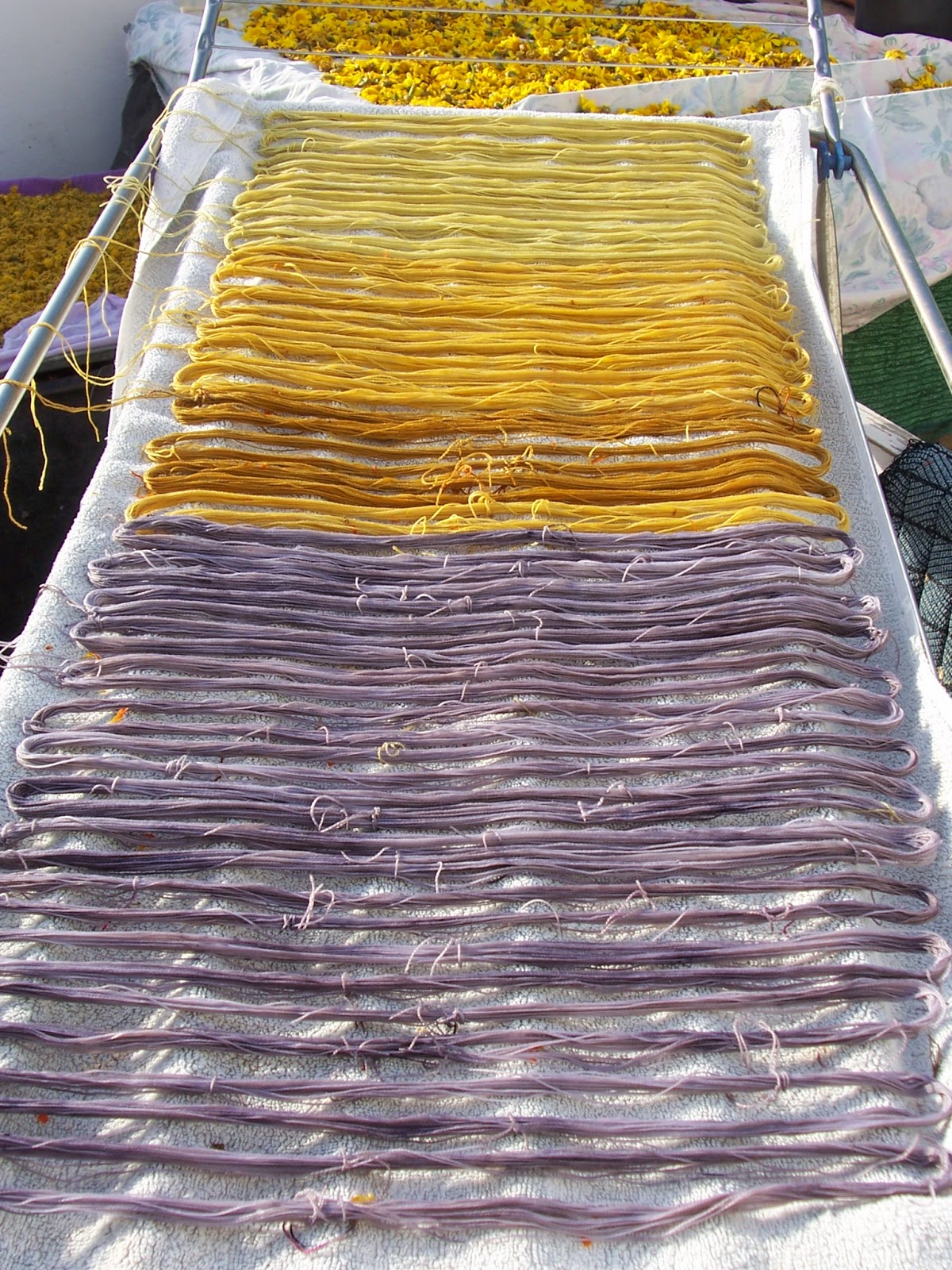Spring again and even though it's only mid April the camomile season is almost finished.
Camomile is one of my favourite dyes, the flowers are beautiful and they give a range of yellows, including different colours depending on where they're grown (material for a future post). The only downside is the rather overpowering smell when there are a lot of them.
I think they probably started flowering in early March but I didn't get around to picking them until the end of the month. Last year I found a patch of waste ground covered in them so imagine my shock when I found this:
 |
| El sitio donde recogí las flores el año pasado, oops! |
Luckily just over the bare patch of soil was this:
 |
| Menos mal que no han limpiado todo. |
So I set to work. As you can see, the patch of ground is practically in the middle of the town. I've been scouting around for other places for next year just in case they decide to clear all of it. The hazards of not growing the plants yourself.
 |
| Aquí estoy recogiendo las flores para uno de mis tintes favoritos - casi en el centro del pueblo. |
Once picked there's drying to be done. To be honest it's not very difficult here. I just spread it out on the terrace for a few days, bringing it in at night because we get heavy dews. After about four days it dries into crispy little golden buttons which look good enough to eat for breakfast with cold milk - and I don't like breakfsast cereal let alone milk! The only problem would be the ants swimming around.
 |
| Las flores secándose en mi terraza, el sol hace casi todo el trabajo. |
I'm trying to put it away to use for the coming 12 months but it's so tempting to throw handfuls into the dyepot - by November I'll be measuring it out carefully.
Here are some threads drying in the evening sun, with flowers drying behind. The grey threads are eucalyptus and iron and the flowers in the background on the left are mimosas.
 |
| Hilos secandose con las flores por detrás. Los hilos grises son de eucalipto y hierro y las flores a la izquierda son de mimosa/acacia. |
And some sisal which I've just dyed this week, it's actually a much more vibrant orangey yellow than it appears here.
 |
| Sisal teñido con camomila. |
I'm off to Ireland on May 14th and I expect I can keep managing to pick until then. The majority of the flowers are finishing but then I'll collect dried heads - Nature'll have already done the work for me.







